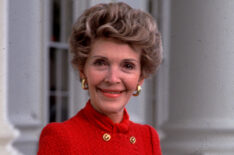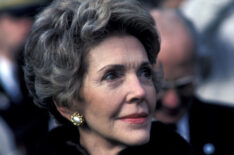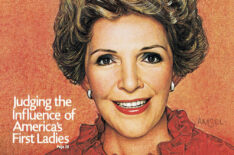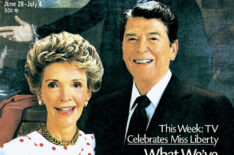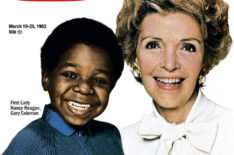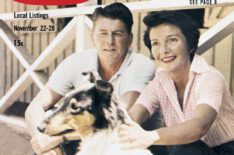Nancy Reagan

Actress • First Lady
Birth Date: July 6, 1921
Death Date: March 6, 2016
Birth Place: New York, New York
Spouses: Ronald Reagan
High fashion, style and glamour are only rarely associated with First Ladies, yet Nancy Reagan embodied all that and more. As First Lady of the United States from 1981 to 1989, the widow of former U.S. President Ronald Reagan was one of the most closely observed and imitated women of her time, not only for her couture gowns but also for the issues she believed in, most notably the "Just Say No" drug awareness campaign which she launched in 1982. Yet before she stepped foot in the White House, Reagan - then known as Nancy Davis - dazzled audiences as an actress in post-war Hollywood.
Although never an A-list talent, she became a fan favorite and appeared in films as diverse as the film noir "Shadow on the Wall" (1950) and the rousing military romance "Hellcats of the Navy" (1957) - the only movie where she acted alongside the country's future commander-in-chief. Although her Hollywood career was brief, it was her tenure as First Lady and keeper of her husband's flame that most endeared her to fans around the world. Her death on March 6, 2016 at the age of 94 brought effusive statements of grief and condolence from Hollywood and Washington D.C. alike.
Anne Frances Robbins was born on July 6, 1921, in Flushing, NY, the only child of Kenneth Seymour Robbins, a car salesman, and Edith Luckett, an actress. Her parents divorced soon after she was born, and the future First Lady was raised in Bethesda, MD for the next six years by an aunt and uncle while her mother traveled the country, pursuing her acting career. In 1929, her mother married Loyal Davis, a politically conservative neurosurgeon who moved them to Chicago, IL. He formally adopted her in 1935 and her name was legally changed to Nancy Davis. She attended the Girls' Latin School of Chicago and graduated in 1943 from Smith College in Massachusetts with a degree in drama. While there, she was almost the schoolmate of fellow First Lady Barbara Bush, who enrolled three months after her graduation.
After Smith College, Reagan moved back to New York to pursue an acting career, where she landed roles in Broadway and off-Broadway shows, including "Lute Song" (1946), where she played the role of Si-Tchun, a lady-in-waiting. In 1949, she signed a seven-year contract with Metro Goldwyn Mayer Studios and appeared in 11 films during her time there, often in roles that called for a responsible young woman or loyal housewife. That same year, she would suffer a career-threatening association which would introduce her to actor Ronald Reagan, who was the then-president of the Screen Actors Guild. She had noticed that her name had appeared on the Hollywood blacklist and sought his help to remove it.
After some investigating, Reagan informed her that she had been confused with another actress of the same name and did what he could to assist her. To the delight of movie lovers everywhere, the two began dating only one year after his high-profile marriage to Academy Award-winning actress Jane Wyman ended in divorce and were described by some in the Hollywood press as "the romance of a couple with no vices." Despite having previously dated such men as Peter Lawford and Clark Gable, the young actress was smitten with the man she would lovingly come to call "Ronnie."
She co-starred in a number of movies around this time, including "The Doctor and the Girl" (1949) with Glenn Ford and "East Side, West Side" (1949). Film critics raved about her performance in the film noir "Shadow on the Wall" (1950) and in films such as "The Next Voice You Hear" (1950), where she played a pregnant housewife who hears the voice of God from the radio. In 1951, the actress landed a part in "Night into Morning," a film that explored bereavement and that Reagan would later call her personal favorite of all the movies she made.
A year later, the actress left the safety net of MGM in an effort to seek roles that did not pigeonhole her as "the good wife." But off-screen, she was about to become one when Reagan eventually proposed to her at the Beverly Hills restaurant Chasen's. To avoid the press, they had a simple ceremony at the Little Brown Church in Los Angeles on March 4, 1952, with William Holden serving as best man. She was later quoted as saying, "My life really began when I married my husband."
The couple's first child, Patricia Ann Reagan (later known by her professional name, Patti Davis), was born months later in October 1952. The next year, she received her long-held wish to play against type in the science fiction flick "Donovan's Brain," in which she portrayed a possessed scientist's baffled wife.
Having been married for five years, the Reagans co-starred in the now cult classic "Hellcats of the Navy" (1957), with Reagan playing Nurse Lt. Helen Blair opposite Ronald as Cmdr. Casey Abbott. Taking the sting out of the much-maligned film - her second-to-last - was the birth of their second child, son Ronald Prescott, in 1958. After making her final film "Crash Landing" (1958), Reagan's acting CV in the 1960s consisted of small screen appearances. She had one-episode roles on shows such as "The Tall Man" (NBC, 1960-62) and "The Dick Powell Show" (NBC, 1961-63). Her only recurring role was a four-episode stint as Betty Anderson in "General Electric Theater" (CBS, 1953-1962), hosted by her husband.
Shortly after her husband became governor of California (1967-1975), Reagan became involved in numerous charities that included visiting veterans, the elderly and the handicapped. She helped popularize the Foster Grandparent Program in the United States, and then in Australia. The press continued to watch her every move. She reportedly disliked living in Sacramento, as it lacked the excitement and social life that Los Angeles afforded her. She also attracted criticism when she moved her family out of the Governor's Mansion into a wealthy suburb because fire officials called the mansion a "firetrap." In 1967, she was appointed to the California Arts Commission and a year later was named Los Angeles Times' "Woman of the Year." While her ascent into politics was quickly gaining speed, her biggest role was yet to come.
Reagan became the First Lady of the United States when her Republican husband beat incumbent President Jimmy Carter in 1980 to become the 40th President of the United States. Only two months after her husband's inauguration, Reagan faced one of the most difficult times of her life when her husband and several others were shot by deranged gunman John Hinkley, Jr. in an attempted assassination outside the Washington Hilton Hotel in D.C. When granted access to see her husband, he famously quipped to her, "Honey, I forgot to duck." Although he would eventually recuperate, she was even more protective of "her Ronnie," and would zealously ensure his wellbeing for the rest of his life.
During her early years at the White House, she spearheaded a major renovation, which was accomplished with private donations. Often compared to the glamour Jackie Kennedy brought during the Kennedy years, the renovations included the conversion of the master bedroom's closet into a beauty parlor, as well as another bedroom into a small gym. She reportedly spent more than $210,000 on new china, a move that raised more than a few eyebrows for it happened at a time when the nation was in a severe recession.
Even though she was living in Washington, D.C., traces of her glamorous Hollywood life never left Reagan. She held a strong interest in fashion and often called on designers such as Oscar De la Renta and James Galanos to design for her trademark wardrobe of red suits, dresses, and gowns. The fire-engine shade became so synonymous with the First Lady that it came to be known as "Reagan red." The inaugural gown Galanos created for Reagan was estimated to cost $10,000, and her luxurious choices in wardrobe soon became controversial.
Reagan eventually confessed she accepted thousands of dollars' worth of clothing and jewelry, but stated they were borrowed and were to be donated to museums after she wore them. Soon after, Reagan told the American people she would no longer accept such extravagant gifts. In 1982, Reagan launched the "Just Say No" drug awareness campaign, her major initiative as First Lady. She traveled throughout the United States and other countries, visiting drug abuse prevention programs and rehab centers. The phrase caught on and became the name of numerous school anti-drug programs.
In 1987, President Reagan signed a drug enforcement bill into law. While some criticized the bill, she considered it a personal victory. In 1988, she addressed the United Nations General Assembly, where she talked about drug abuse and trafficking laws.
Reagan's other important role was that of the President's "protector." She took it upon herself to know his schedule, the events he attended, and with whom. She was said to have consulted astrologer Joan Quigley and managed his schedule according to her insight. Her influence over his presidency became more apparent in the mid-1980s, much to the dismay of the president's handlers.
During the Iran-Contra affair in 1987, there were reports that she had expressed to her husband that the White House Chief of Staff, David Regan, should resign because she felt that the scandal was damaging him as a leader of the free world. President Reagan did not agree with her, but eventually took her side after he learned that Regan had angrily hung up on his wife during a phone conversion. As Reagan's apparent mental faculties appeared to be suffering in his second term, she watched over him like a hawk, making sure the full story would not be told to the press. Her influence spread beyond politics and affected the choices that many women took regarding their health.
In October 1987, Reagan was diagnosed with breast cancer, and instead of a lumpectomy, she decided to have a mastectomy performed. In the wake of her surgery, more women started asking for mammograms.
After her husband's second term ended in 1989, the couple moved back to California, dividing their time between their Bel Air estate and the Reagan Ranch in Santa Barbara. After President Reagan was diagnosed with Alzheimer's disease in 1994, she became his primary caregiver and became actively involved with the National Alzheimer's Association and its affiliate, the Ronald and Nancy Reagan Research Institute in Chicago.
When her husband died in their Bel Air home on June 5, 2004, Reagan kept a commendable amount of composure, traveling from her home to the Reagan Library in Simi Valley for an internationally televised memorial service, then to Washington D.C. for a national funeral service. She returned to the library in California for a sunset memorial service, where the extremely frail former First Lady was overcome with emotion and cried in public for the first time during that week. After she accepted the folded flag, Reagan - who once said famously wrote in her diary that if anything happened to Ronnie, "my life would be over" - kissed the casket and said, "I love you" before leaving.
Despite any partisan feelings that leaned anti-Reagan, her touching goodbye caused many citizens to reevaluate her contributions. In the wake of her husband's death, Reagan remained active in politics when personally compelled to do so, specifically in favor of stem cell research - a stance that was often at odds with her party's now more right-wing conservative doctrine.
On Feb. 17, 2008, she suffered a fall and was taken to St. John's Health Center in Santa Monica, but was released two days later. In March of that same year, Reagan officially endorsed Senator John McCain for President of the United States, but little was heard from her politically in the years after that 2008 election.
Nancy Reagan died on March 6, 2016 at her home in Los Angeles of congestive heart failure. She was 94 years old.
By Marc Cuenco
Credits

Legendarne prve dame

Greatest Mysteries: Smithsonian

Greatest Mysteries
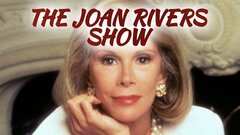
The Joan Rivers Show
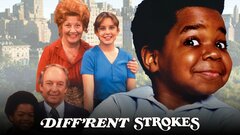
Diff'rent StrokesStream

Dean's Place
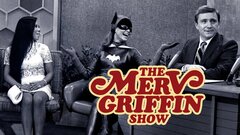
The Merv Griffin Show

The Merv Griffin Show
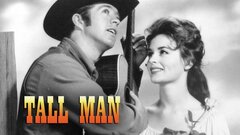
The Tall Man

Crash Landing
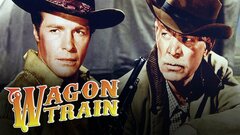
Wagon TrainStream
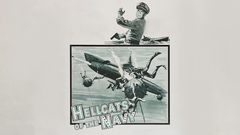
Hellcats of the NavyStream
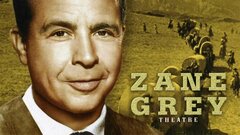
Zane Grey Theater
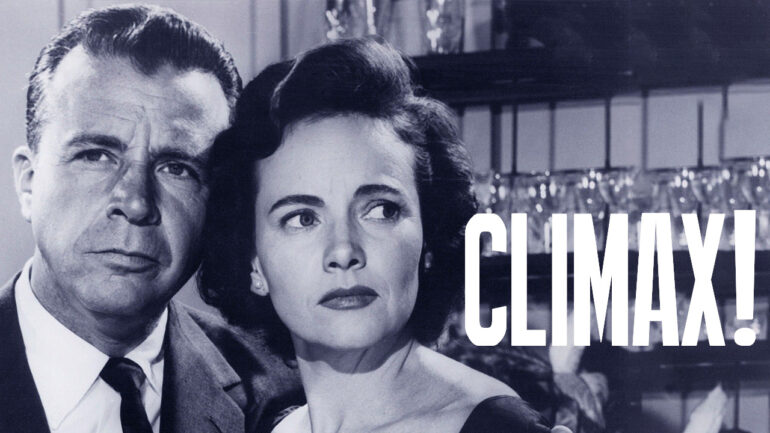
Climax!

Donovan's Brain

Talk About a Stranger

Shadow in the Sky

Noche en la Mañana

Night Into Morning

It's a Big Country

Shadow on the Wall

The Doctor and the Girl

The Next Voice You Hear


